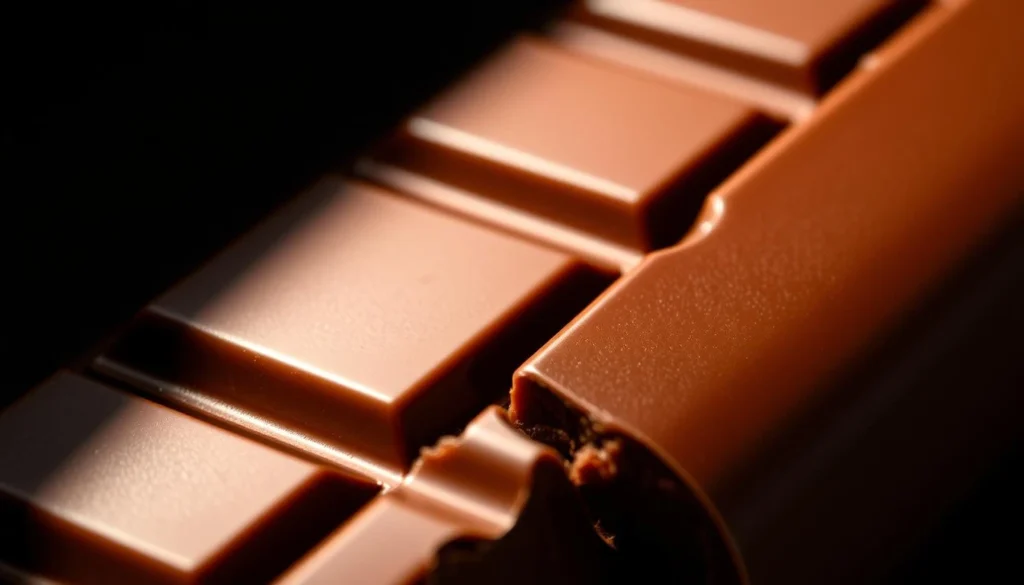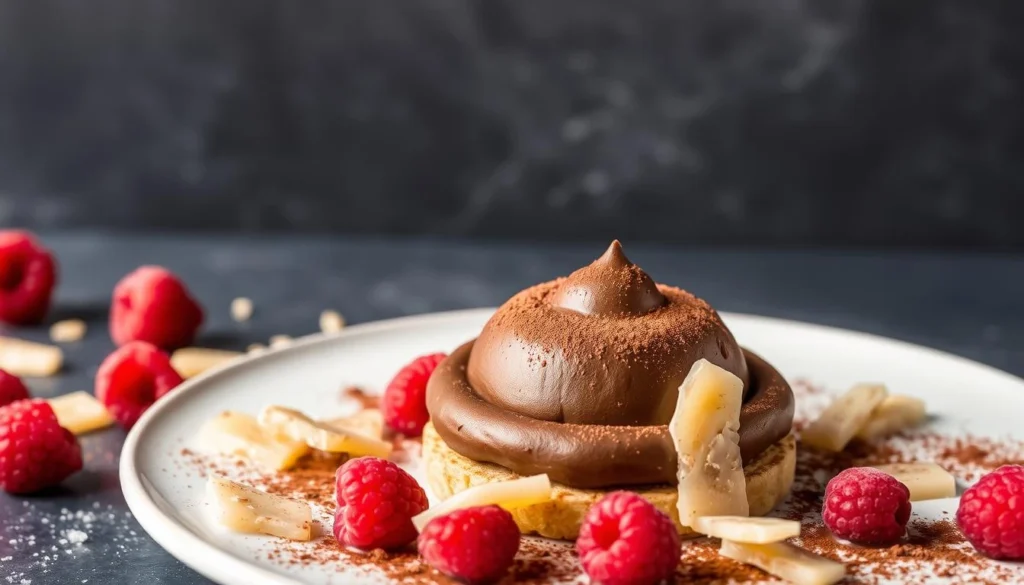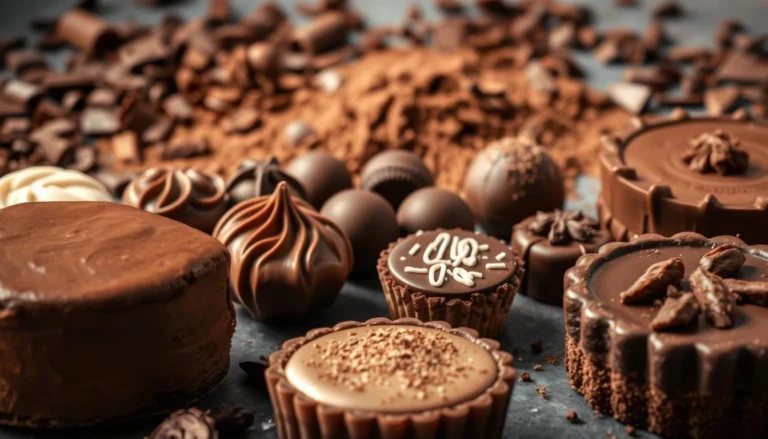Table of Contents
You’re about to learn the secrets of making the best dessert chocolate. Whether you’re new or experienced, knowing how to fix dessert chocolate is crucial. You’ll be able to make a delicious chocolate dessert that wows everyone.
Imagine making a tasty chocolate dessert quickly, with a smooth texture and rich flavor. To fix dessert chocolate, you need to know the basics. We’ll cover everything from the start to advanced techniques in this article. You’ll learn how to make perfect dessert chocolate every time.

By the end, you’ll be a pro at making the perfect dessert chocolate. You’ll understand how to fix dessert chocolate and make an easy chocolate dessert that everyone loves. So, let’s start our journey into the world of chocolate dessert recipes. You’ll learn to fix dessert chocolate like a pro.
Understanding the Basics of Dessert Chocolate
To make the perfect dessert chocolate, you need to know the basics. This means learning about the different types of chocolate and their special qualities. You’ll work on various chocolate dessert ideas, from simple to complex, to make the best chocolate dessert. It’s important to think about the type of chocolate you use when making a homemade chocolate dessert.
Exploring chocolate, you’ll find each type has its own taste and texture. Dark chocolate is known for its deep, bold flavor. On the other hand, milk chocolate is sweeter and creamier. Knowing these differences helps you pick the right chocolate for your dessert.
Here are some key factors to consider when working with chocolate:
- Chocolate composition: Cocoa butter and sugar content can affect the texture and flavor of your chocolate.
- Temperature and environmental factors: Temperature and humidity can impact the quality of your chocolate, so it’s essential to control these factors when working with chocolate.
- Chocolate types: Dark, milk, and white chocolate each have unique characteristics that can enhance or detract from your dessert ideas.

By understanding these basic concepts, you’ll be on your way to making delicious and professional-looking desserts. Whether you’re making a simple homemade chocolate dessert or a complex best chocolate dessert, knowing the basics of dessert chocolate is key.
Common Issues When Working with Chocolate
Exploring chocolate desserts can lead to common problems. These issues affect the texture and look of your treats. To make smooth, glossy desserts, it’s key to know the causes and how to solve them.
Problems like melting, seizing, or blooming can be a challenge. Recognizing these issues helps you prevent or fix them. This ensures your chocolate desserts look and taste great.
Let’s dive into the main points:
- Melting: This occurs when chocolate is exposed to high temperatures, causing it to lose its shape and texture.
- Seizing: This happens when chocolate comes into contact with water or moisture, causing it to become stiff and grainy.
- Blooming: This is a phenomenon where a white, chalky coating forms on the surface of the chocolate, affecting its appearance.
Knowing these common issues helps you make delicious chocolate desserts. Whether you’re trying to satisfy a chocolate craving or explore new recipes, understanding these problems is key to success.
Essential Tools and Equipment for Fix Dessert Chocolate Problems
To make a perfect quick chocolate dessert, you need the right tools. Having these essentials helps fix common problems and makes your desserts look great. Whether it’s a decadent chocolate dessert or a healthy chocolate dessert, the right tools are key.
Working with chocolate requires controlling the temperature. Tools like thermometers and heating mats are essential. You’ll also need double boilers and chocolate melters to melt the chocolate smoothly.
You’ll also need storage solutions to keep your chocolate fresh. This includes containers and wrapping materials. By investing in these, you can make a variety of delicious desserts and keep your chocolate perfect.
- Temperature control tools: thermometers, heating mats
- Mixing and melting equipment: double boilers, chocolate melters
- Storage solutions: chocolate storage containers, wrapping materials
With the right tools, you can fix common problems and make perfect desserts. Remember to use high-quality equipment and follow proper techniques for the best results.
The Science of Chocolate Tempering
Exploring no bake chocolate dessert and easy chocolate desserts shows tempering’s key role. It involves heating and cooling chocolate to form a stable crystal structure. This gives it a smooth, glossy look and a satisfying snap.
To temper chocolate, using the best chocolate dessert recipes is crucial. These recipes help you heat and cool chocolate to the right crystal structure. Tools like thermometers and tempering machines can help you get the perfect temperature and crystal structure.
Here are some key factors to consider when tempering chocolate:
- Temperature: The ideal temperature for tempering chocolate is between 86°F and 90°F.
- Seeding: Seeding involves adding a small amount of already-tempered chocolate to the melted chocolate to help create the desired crystal structure.
- Agitation: Agitation involves stirring the chocolate gently to distribute the heat evenly and prevent the formation of unwanted crystals.
Mastering tempering lets you make no bake chocolate dessert and easy chocolate desserts that taste great and look amazing. With practice and patience, you’ll get the perfect crystal structure. Your dessert chocolate will impress everyone.
Troubleshooting Texture Problems in Chocolate Desserts
Texture is key when working with chocolate. You want your homemade chocolate desserts to be smooth and creamy, not grainy or seized. Understanding common texture problems and how to fix them is crucial. This is true for both quick chocolate dessert ideas and elaborate chocolate dessert for parties.
Texture issues like grainy, seized, or bloomed chocolate can happen. They might be due to wrong tempering, overheating, or bad storage. To solve these, try re-tempering, re-melting, or changing the chocolate’s mix. Fixing these problems will help you make delicious, appealing chocolate desserts that wow everyone.
Here are some tips for fixing texture problems in your chocolate desserts:
- Fixing grainy texture: Try re-tempering the chocolate or adjusting the sugar content.
- Addressing seized chocolate: Re-melt the chocolate and adjust the temperature.
- Resolving blooming issues: Adjust the storage conditions and avoid overheating.
By following these tips and being patient, you can make smooth and creamy homemade chocolate desserts. They’re perfect for any event. Whether it’s a quick treat or a fancy party dessert, texture is essential for a great taste and look.
Enhancing Chocolate Flavor Profiles
Creating delicious chocolate desserts means focusing on flavor. You can make your special occasion treats even better by trying new flavor mixes. Adding vanilla, nuts, or fruit to your chocolate can really make a difference.
Flavorings like orange, lemon, and mint are popular for chocolate desserts. You can also use nuts like hazelnuts or almonds for a special texture and taste. Adding fruit, such as raspberries or strawberries, can add a sweet and tangy twist.
Here are some ideas for delicious chocolate dessert options:
- Chocolate-dipped strawberries with a hint of lemon
- Orange-infused chocolate truffles
- Mint-flavored chocolate chip cookies
Trying out different flavor mixes can lead to unique and tasty chocolate desserts. Whether for special occasions or just for fun, improving the flavor can elevate your creations.
| Flavoring | Description |
|---|---|
| Vanilla | A classic flavoring that pairs well with chocolate |
| Nuts | Adds a unique texture and flavor to chocolate desserts |
| Fruit | Infuses chocolate with a sweet and tangy flavor profile |
Advanced Techniques for Perfect Chocolate Desserts
To make your chocolate desserts amazing, you need to learn advanced techniques. You can make desserts look stunning by mastering smooth ganache, molding chocolate, and decorating with flair. This will help you fix dessert chocolate problems and make an easy chocolate dessert recipe.
Creating the perfect chocolate dessert recipe is all about the details. You can use different chocolates like dark, milk, or white to get unique flavors. By learning these techniques, you’ll make desserts that look and taste great. This will impress your friends and family.
- Creating a smooth and creamy ganache to use as a filling or topping for your desserts
- Molding chocolate into intricate shapes to create beautiful and unique desserts
- Decorating your desserts with style and flair using techniques such as piping and stenciling
By adding these techniques to your chocolate dessert recipe, you’ll make desserts that are both stunning and delicious. With practice and patience, you can become a pro at making perfect chocolate desserts. You’ll easily fix dessert chocolate issues.
Creative Solutions for Chocolate Emergencies
Working with chocolate can lead to emergencies. It’s crucial to have a plan to save your dessert. Whether it’s for a special event or just for fun, being ready can make a big difference. We’ll look at creative fixes for common chocolate problems, helping you make a great dessert even when things go wrong.
Picture this: you’re making a chocolate dessert and disaster hits – your chocolate melts, seizes, or you’re out. Don’t worry! There are ways to fix it. You can try re-tempering or re-melting your chocolate, or use a chocolate substitute to save the day.
- Re-tempering: If your chocolate has melted, try re-tempering it by heating and cooling it to the right temperature.
- Re-melting: If your chocolate has seized, try re-melting it and then re-tempering it.
- Chocolate substitutes: If you’ve run out of chocolate, try using a chocolate substitute, such as cocoa powder or chocolate chips.
With these creative solutions, you can make a delicious and professional-lookingbest chocolate dessert even in tough situations. So, don’t be afraid to try newchocolate dessert ideas. With practice and patience, you’ll become a master chocolatier in no time!
Conclusion: Mastering Your Chocolate Dessert Journey
Mastering chocolate desserts is a journey of discovery and creativity. You’ve learned the basics of working with chocolate. Now, you can tackle any chocolate dessert challenge.
Creating delicious chocolate desserts is all about exploring and improving. Don’t hesitate to try new things. Each success brings you closer to your own unique style.
Keep being curious and patient as you continue your journey. Enjoy the process and the joy it brings to others. Your passion for chocolate will make every dessert special. Happy baking and enjoy the fruits of your labor!
FAQ
What are the different types of chocolate used for desserts?
There are three main types of chocolate for desserts: dark, milk, and white. Each has its own taste and can be used in many recipes.
How do temperature and environmental factors affect chocolate desserts?
Temperature and humidity can change how chocolate desserts turn out. Keeping the right temperature and storing them properly is key to avoid problems like melting or blooming.
What are the common issues that can arise when working with chocolate for desserts?
Issues like melting, seizing, and blooming can happen with chocolate desserts. But, there are ways to prevent and fix these problems.
What essential tools and equipment are needed for fixing dessert chocolate problems?
You’ll need tools like thermometers and heating mats for temperature control. Also, double boilers and chocolate melters for mixing and melting. And, don’t forget proper storage to keep chocolate fresh.
Why is chocolate tempering important for desserts?
Tempering is key for professional-looking chocolate desserts. It controls the chocolate’s temperature and crystal structure for a glossy finish and satisfying snap.
How can you troubleshoot texture problems in chocolate desserts?
Texture issues like graininess or blooming can be fixed by re-tempering or adjusting the chocolate. Knowing the cause is the first step to solving the problem.
How can you enhance the flavor profiles of chocolate desserts?
Try adding flavorings, extracts, or infusions to your chocolate desserts. Flavors like vanilla, nuts, or fruit can make your desserts unique and tasty.
What are some advanced techniques for creating perfect chocolate desserts?
Mastering ganache, molding, and decoration can elevate your chocolate desserts. These skills help you create stunning, professional-looking treats.
How can you come up with creative solutions for chocolate emergencies?
Chocolate emergencies can happen. But, having quick fixes and last-minute ideas can save your desserts and impress your guests.
